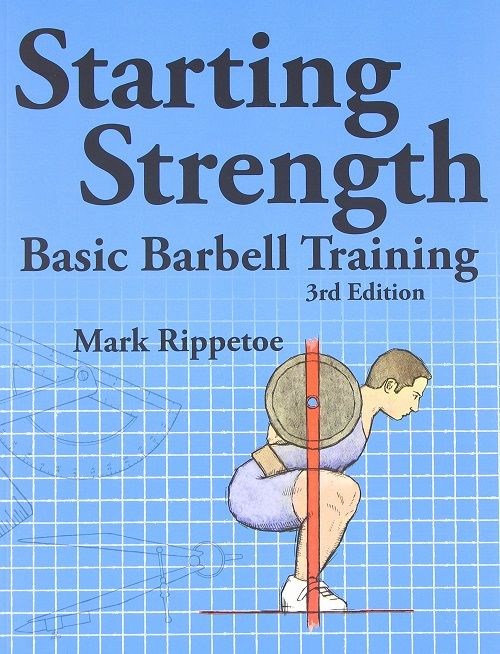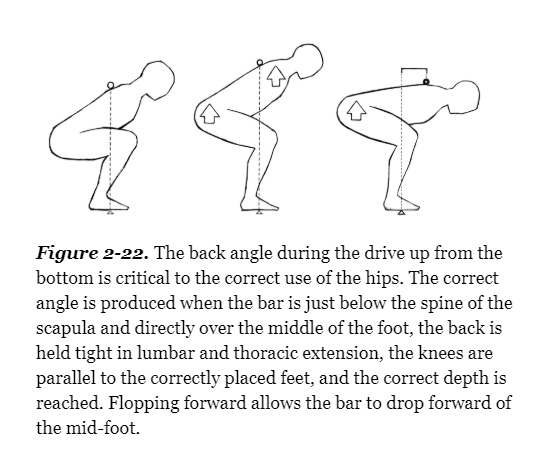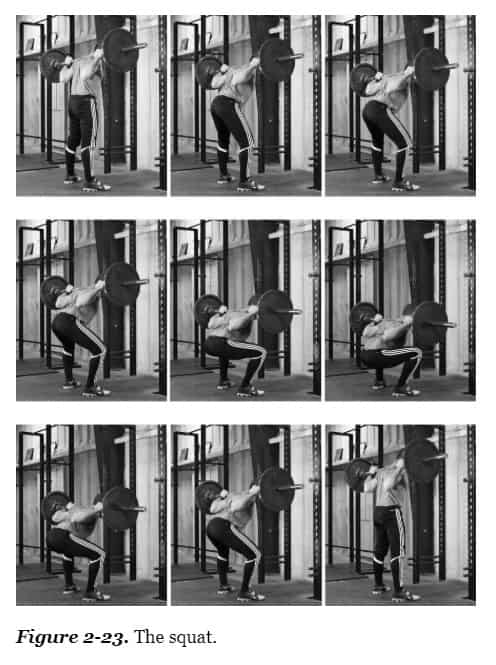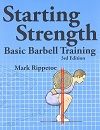
The formula for getting stronger isn’t that complicated: Pick up heavy things and eat like the beast that you are. Mark Rippetoe’s Starting Strength is the blueprint for massive strength.
Here is my breakdown of why Starting Strength is such a killer book for weightlifters and those looking for strength gains. Included in this review are some key takeaways, quotes and things you should know before you dive in.

Where to Buy — Starting Strength by Mark Rippetoe
If you’ve ever set foot into a strength training facility with a high school or university sports team in North America, there is an excellent chance you’ve gotten a taste of Starting Strength.
Starting Strength is focused on a six-lift barbell training protocol.
Why barbells?
Well, there are a few good reasons:
- “The human body functions as a complete system—it works that way, and it likes to be trained that way. It doesn’t like to be separated into its constituent components and then have those components exercised separately, since the strength obtained from training will not be utilized in this way.”
- “The general pattern of strength acquisition must be the same as that in which the strength will be used… When strength is acquired in ways that do not correspond to the patterns in which it is intended to be actually used, the neuromuscular aspects of training have not been considered.”
- “Properly performed, full-range-of-motion barbell exercises are essentially the functional expression of human skeletal and muscular anatomy under a load.”
But Rippetoe is well aware of what causes so many athletes and gym-goers to shy away from them. The fear of injury born of ignorance of how to perform these simple looking lifts properly.
- “The only problem with barbell training is the fact that the vast, overwhelming majority of people don’t know how to do it correctly. This is sufficiently serious and legitimate a concern as to justifiably discourage many people from training with barbells in the absence of a way to learn how.”
Starting Strength aims to remedy this lack of knowledge, equipping the reader with full instructions, illustrations, and teaching and learning cues designed to help anyone master the barbell.

Simplicity is best when it comes getting ridiculously strong, and Rippetoe goes in-depth about the advantages of barbell training versus other training methods.
Full instructions, illustrations, high-quality pictures, and teaching and learning cues are included with each exercise.
Some other of my favorite quotes from Starting Strength:
- “A weak man is not as happy as that same man would be if he were strong. This reality is offensive to some people who would like the intellectual or spiritual to take precedence.”
- “Exercise is the thing we must do to replicate the conditions under which our physiology was—and still is—adapted, the conditions under which we are physically normal.”
- “Barbells allow weight to be moved in exactly the way the body is designed to move it, since every aspect of the movement is determined by the body. Machines, on the other hand, force the body to move the weight according to the design of the machine.”

- “There is no way for a human being to utilize the quadriceps muscles in isolation from the hamstrings in any movement pattern that exists independently of a machine designed for this purpose. No natural movement can be performed that does this. Quadriceps and hamstrings always function together, at the same time, to balance the forces on either side of the knee. Since they always work together, why should they be exercised separately? Because somebody invented a machine that lets us?”
- “The control of the bar, and the balance and coordination demanded of the trainee, are unique to barbell exercise and completely absent in machine-based training.”
Ever wonder why your quads almost always get sore when squatting?
- “This soreness occurs because the quads are the only knee extensor group, while the hip extensors consist of three muscle groups (hamstrings, glutes, adductors). They comprise more potential muscle mass to spread the work across—if they are trained correctly.”
The Power of Simplicity
The unmotivated beginner won’t enjoy this book. This is for the lifter–beginner or intermediate or even advanced–who wants to boil down their strength training to the basics and gain a deeper understanding of why and how to do it.
Rippetoe goes into depth with each lift. I appreciated this aspect of the book–this stuff fascinates me, and learning more about each lift and why it is prescribed the way it is and why the technique should be performed as described made me buy in more to the program.
And I understand that this kind of in-depth program description isn’t for everyone. Reading is, like, hard work. (/s)
Ultimately, the enduring effectiveness of this program is its simplicity.
Despite the wealth of information at our fingertips through our smartphones and the old interwebs, all of the information lends usually to paralysis and feeling overwhelmed.
Starting Strength gives you a simple blueprint to follow, three training days a week, with adequate nutrition and rest, that will see you pounding out weights and developing legit, functional strength. Included are instructions for when you hit the inevitable plateau or stall in gains.
You also don’t need to fart around with a million exercises–Starting Strength makes use solely of the squat, deadlift, bench press, overhead press, and power clean–and the rep protocols are straight-forward.
You don’t need to overthink things. You don’t need to prescribe yourself rep ranges.
Starting Strength takes care of that for you.
Again… Simplicity.
Pick heavy things up, eat like a champ, recover like a boss. And watch them strength gains explode through the roof.
 Where to Buy — Starting Strength by Mark Rippetoe
Where to Buy — Starting Strength by Mark Rippetoe